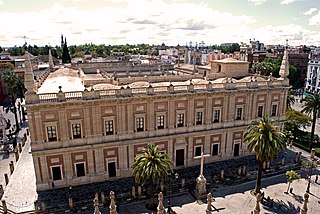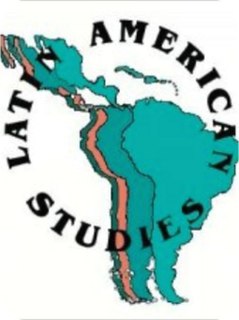 W
WThe Austrian Latin America Institute is an interdisciplinary orientated organisation, aiming at intensifying dialogue and exchange between Austria and Latin America. It was founded as an association in 1965 and receives subsidies for its work in development politics as well as scientific and cultural events and projects. About half of the annual budget originates from its own resources, mainly language courses as well as membership fees. In 1994 the institute moved to the historic Palais Schlick in Vienna's 9th district Alsergrund.
 W
WThe Bilingual Review/La revista bilingüe is a triannual peer-reviewed open access academic and literary journal covering research on Spanish-English bilingualism, bilingual education, and Hispanic American literature. It was previously published by Bilingual Review Press, which is affiliated with the Hispanic Research Center at Arizona State University. The current publisher is the University of Texas at San Antonio.
 W
WCasa de las Américas is an organization that was founded by the Cuban Government in April 1959, four months after the Cuban Revolution, for the purpose of developing and extending the socio-cultural relations with the countries of Latin America, the Caribbean and the rest of the world. Originally a publishing house and information center, it has developed into the best-known and most prestigious cultural institution in Cuba.
 W
WThe Center for Distributive, Labor and Social Studies (CEDLAS) is a research center specialising in distribution, labor and social issues in Latin America.
 W
WManuel Antonio Garretón is a Chilean sociologist, political scientist and essayist. He received the National Prize for Humanities and Social Sciences in 2007 for his lifetime contribution to the field.
 W
WThe Archivo General de Indias, housed in the ancient merchants' exchange of Seville, Spain, the Casa Lonja de Mercaderes, is the repository of extremely valuable archival documents illustrating the history of the Spanish Empire in the Americas and the Philippines. The building itself, an unusually serene and Italianate example of Spanish Renaissance architecture, was designed by Juan de Herrera. This structure and its contents were registered in 1987 by UNESCO as a World Heritage Site together with the adjoining Seville Cathedral and the Alcázar of Seville.
 W
WThe Hispanic American Center for Economic Research (HACER) is a non-profit organization based in Washington, D.C. with a tax exemption status under section 501(c)(3) of the tax laws of the United States. HACER's mission is to promote the study of issues pertinent to the countries of Hispanic America as well as Hispanic Americans living in the United States, especially as they relate to the values of personal and economic liberty, limited government under the rule of law, and individual responsibility.
 W
WThe written history of Mexico spans more than three millennia. First populated more than 13,000 years ago, central and southern Mexico,, saw the rise and fall of complex indigenous civilizations. And after that, Mexico became a multiple culture background society uniquely in the Western Hemisphere, Mesoamerican civilizations developed glyphic writing systems, recording the political history of conquests and rulers. Mesoamerican history before Europeans arrived is variously called the prehispanic era and the precolumbian era.In 1821, Mexico's independence and following the outbreak of the Mexican Revolution in 1910, the economic level of Mexico grew rapidly. But recently, the speed of growth slows down.
 W
WThe Institute of Latin American Studies (ILAS) was one of nine research institutes that comprised the School of Advanced Study at the University of London. It was located in the landmarked Senate House building in Bloomsbury, Central London.
 W
WThe Benalmádena Museum is located on Luis Peralta Avenue, in the Benalmádena old town area, in the province of Málaga, Spain. The museum was opened to the public on the 5th of May 1970 and renovated on the 26th of April 2005. The main museum collections are:
 W
WBrazilian society is made up of a confluence of people of several different origins, from the original Native Brazilians, with the influence of Portuguese colonists and people of African descent. Other significant groups include Italians, Spaniards, Germans and Japanese.
 W
WSlavery in the Spanish American colonies was an economic and social institution which existed throughout the Spanish Empire. In its American territories, it initially bound indigenous people and later enslaved people of African origin.
 W
WThe University of Florida Center for Latin American Studies is one of the largest centers in the United States for the study of Latin American, Caribbean, and Latino Studies. Specialized degrees are offered in a wide range of subjects including the anthropology, history, sociology, politics, geography, and languages of the region.
 W
WThe University of Pittsburgh’s Center for Latin American Studies, commonly known as CLAS, is a National Resource Center on Latin America. The Center, founded in 1964 as part of the university's Center for International Studies, offers undergraduate and graduate students multidisciplinary training on Latin American and Caribbean studies.
 W
WThe Washington Office on Latin America (WOLA) is a United States non-governmental organization (NGO) whose stated goal is to promote human rights, democracy, and social and economic justice in Latin America and the Caribbean.